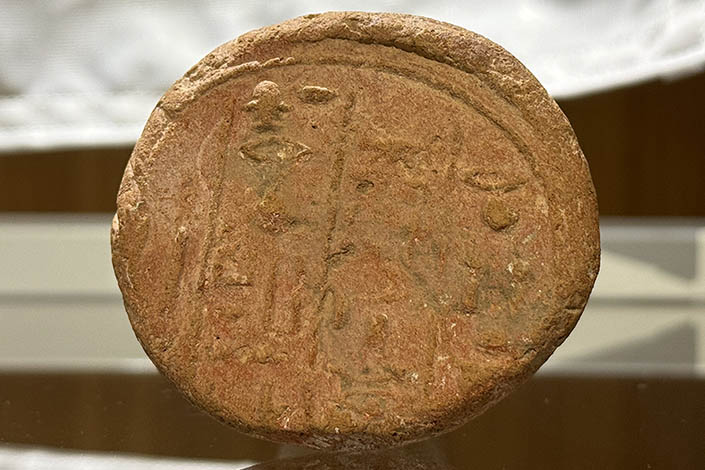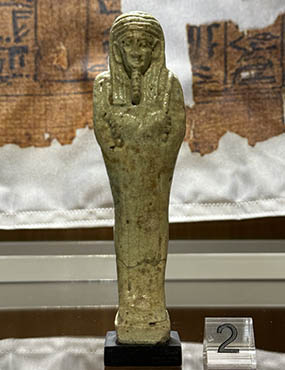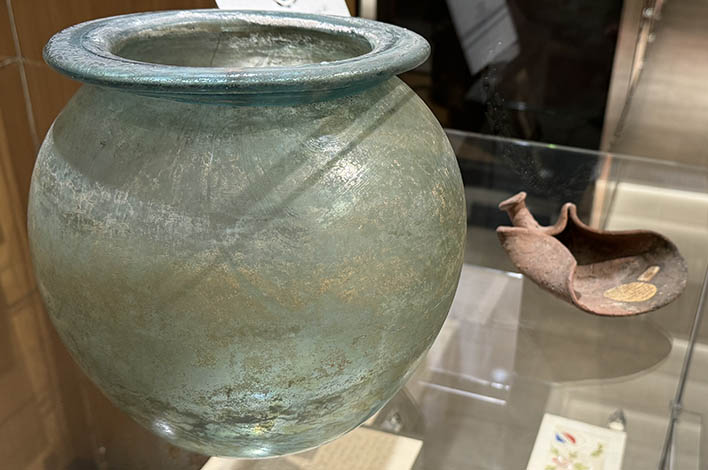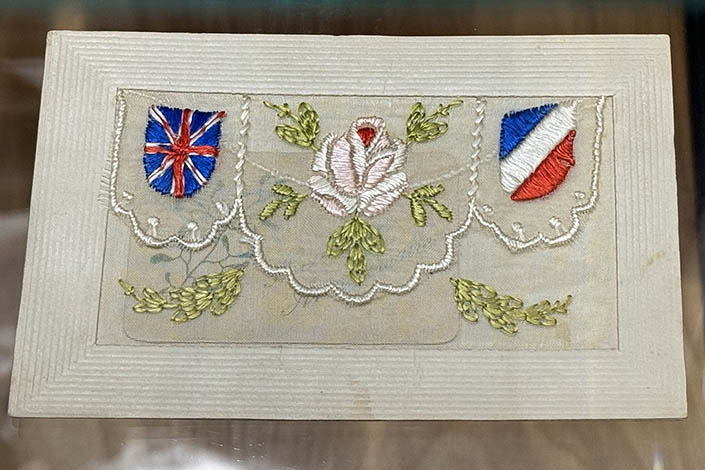Every Object Tells a Story
“Every object tells a story”. It’s a common trope because it's true. Museums, places filled with objects, are therefore full of stories. But whose stories? And, are we telling them right?
It is not possible to display every object held in a museum’s collection. Decisions are made about which objects can and should be displayed. This means that certain objects, and therefore certain stories, are given priority. Others may sit silent and unseen in the museum stores.
The selection of objects shown to the public in museum galleries can reinforce or challenge existing narratives. Artefacts from different times, cultures and contexts may be drawn together in seemingly incongruous ways. Our current temporary display presents such a narrative. We have brought together objects from ancient Egypt, the Roman Empire, the First World War and the 20th century struggle for Indigenous rights in Australia. Whose objects were these? And what story are we trying to tell by bringing them all together?
What unites all of these objects is the desire to remember and care for the dead. While some of the dead represented in our display are named, the identity of others is unknowable. Together they demonstrate that the wish for the dead to be treated respectfully, and for them to be remembered is universal.
We know, for example, that the tomb of Huy of Hut-heret-ib, a king’s scribe who lived in New Kingdom Egypt, was clearly identified by his funerary cone, so anyone passing by could speak his name and keep his memory and soul alive.

[Image: Funerary cone of Huy of Hut-heret-ib, King's scribe (MU4858, 18th Dynasty {c. 1550-1295 B.C.E.}, Egypt)]

We also know that Mer-her-khetiu sought a peaceful existence in the afterlife. This sandal-bearer for the ancient Egyptian goddess, Isis, anticipated that his heart would be weighed against a feather and sought to ensure its purity through the spells laid out in the Book of the Dead. The unknown owner of the ushabti hoped to secure a relaxing afterlife through the magical services the ushabti could provide. [Image: Ushabti MU4818 1085 BCE - 525 BCE, Egypt Ushabti figurines were frequently included amongst ancient Egyptians' grave goods. Each ushabti acted as a servant in the afterlife.]
Centuries later, across the Roman Empire, those who died were cremated in a rite very different from those observed in New Kingdom Egypt, but equally driven to ensure a peaceful journey to the afterlife. This rite was observed in the far-flung provinces of the Empire, represented in the Romano-British cinerary urn. In the urban bustle of Rome itself, the freedmen of Augustus were offered their own space to be buried, represented in a ritual shovel, used to gather the cremated remains of those buried in this sacred space.

[Image: glass cinerary urn (MU4177, c.43-410 C.E.), from Lincolnshire, Roman Britain and ritual funerary ash shovel (MU4762, 1st Century C.E.), from the Columbarium of the Freedmen of Augustus, Rome.]
Fast forward another two thousand years to the First World War and we see the treasured keepsakes held by the loved ones of those lost in war. Arthur’s greeting from the front treasured by his sister Jessie, while the parents of Sergeant J H McGregor held tightly to the consoling words of Lieutenant Brock, who wrote to inform them of the passing of their son, Joseph Hutton, and his loyal service and valiant bravery in the face of lethal danger. While their memorials are hosted in distant lands, these tangible memories could be held close to the heart.

[Image: Embroidered postcard (AHM001182) 21 April, 1916, France]
As the 20th century unfolded other struggles were taking place and the veterans of those struggles were remembered publicly. The passing of Mary M. Bennett led those who shared her passion for realising Indigenous rights in Australia, to dedicate their work to her memory. The leadership of Charles Perkins AO, whose loss was keenly felt, especially by those who had experience of racial discrimination, was recognised in the provision of a State funeral. The memory of these individuals is also the memory of struggle and a recognition of how much work remains to be done.
All of these objects highlight the ways in which the dead live in the hearts of those who loved them. While they are gone, their deeds ripple outward, through their communities. Their stories have attached themselves to these objects and continue to speak themselves into our lives.
Contact: Macquarie University History Museum
Phone: +61(2) 9850 9263
Email: muhm@mq.edu.au